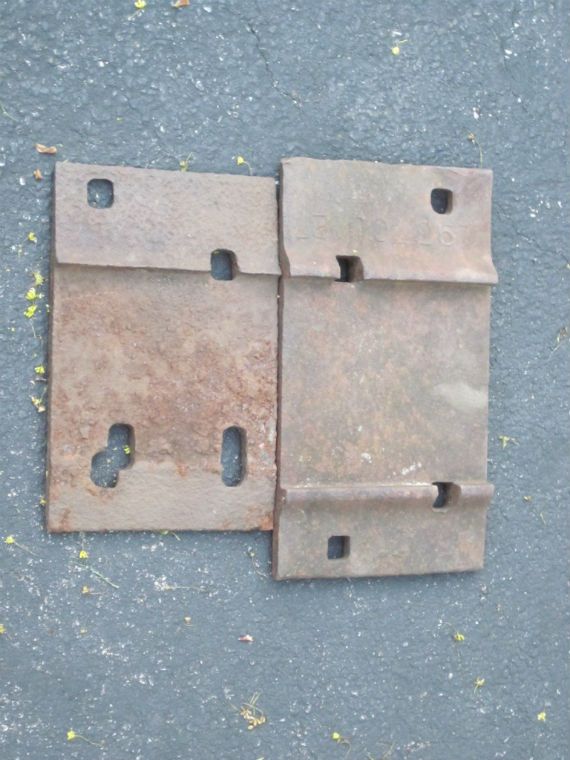Over the years I have collected tie plates and spikes from row's where I thought the area would be destroyed and artifacts lost forever. I had assumed that tie plates were of standard size and weight. I've been corrected. Most of the plates that I have are picked from the NYC West Shore line near Genesee St[33]. After I found out that the Gardenville line was ripped up recently, I walked the line. They stripped that last remaining section pretty good leaving almost nothing behind.
But fear not, I found 1 tie plate, sevearl spikes, clips and nuts and bolts in reasonable condition. I had considered leaving them there but with that construction company there and it's expansion, I took them before they were lost.
Anyways, yesterday, I was using the plates to hold down my boat cover in the gusty winds. At one point I picked them both up at the sametime and suddenly realized that they were different. Check out the picture. The larger plate is from the West Shore line and the smaller plate is from the Gardenville line. I assume that the smaller plate meant a smaller rail.

But fear not, I found 1 tie plate, sevearl spikes, clips and nuts and bolts in reasonable condition. I had considered leaving them there but with that construction company there and it's expansion, I took them before they were lost.
Anyways, yesterday, I was using the plates to hold down my boat cover in the gusty winds. At one point I picked them both up at the sametime and suddenly realized that they were different. Check out the picture. The larger plate is from the West Shore line and the smaller plate is from the Gardenville line. I assume that the smaller plate meant a smaller rail.
